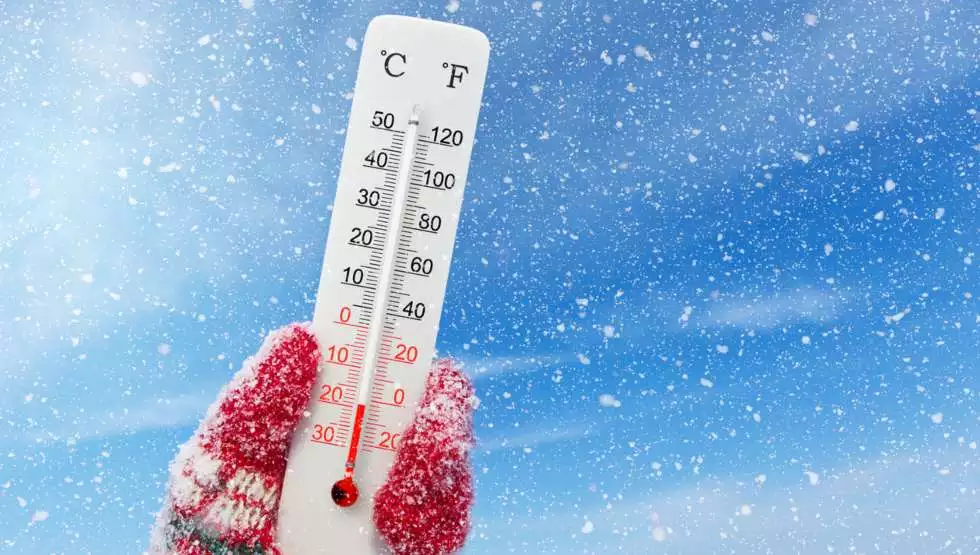Air source heat pumps (ASHPs) are a highly sustainable and efficient way to heat your home and building. They work by absorbing heat from the outside air and transferring it inside to warm up our living spaces. But what happens when it gets really cold outside? Can air source heat pumps work at -20°C?
The short answer is… yes, they can! But it’s important to understand the technicalities involved in making it possible. The Kelvin temperature scale is used to measure the temperature at which heat pumps can continue to function as they should.
Air source heat pumps in freezing temperatures
The Kelvin scale is based on the concept of absolute zero, the point at which particles have minimum kinetic energy and can’t get any colder. Zero Kelvin is the absolute lowest temperature that can be reached, and this is when there’s no thermal energy left in the air. Molecules (or atoms) move mostly because of heat. At zero Kelvin all particles on Earth stop moving completely. When temperatures reach -273.15°C, or -459.67°F, this is the equivalent of zero Kelvin.
This means that when the temperatures drop to -20°C, using the Kelvin scale, there’s still more than enough heat in the atmosphere for air source heat pumps to generate heat at a comfortable and consistent level for use in the home.
There’s a lot of misunderstanding in the UK when it comes to heat pumps. When sized and installed correctly, heat pumps are more than sufficient to heat your home and hot water needs. Many countries in Northern Europe including Finland, Norway, and Sweden (where temperatures can reach as low as -30°C) use heat pumps as their heating and hot water source. The UK has much milder temperatures that allow heat pumps to work.
The science behind air source heat pumps
Air source heat pumps use the refrigeration cycle to transfer heat from one place to another. The refrigeration cycle works by circulating a refrigerant between two heat exchangers – one outside the building and the other inside. In order to transfer heat from outside to inside, the refrigerant must be cooler than the surrounding air. As a result, air source heat pumps work more efficiently in milder temperatures. At lower temperatures, they require more energy to absorb the same amount of heat.
Technology advancements
Recent advancements in air source heat pump technology have enabled heat pumps to function at lower temperatures. Some manufacturers, including Vaillant, now provide systems that can operate efficiently at temperatures as low as -20°C. This has been achieved by enhancing the design of the refrigeration cycle, improving the compressor technology and improving the insulation of the unit. The use of inverter-driven compressors can also improve air source heat pump performance at lower temperatures by allowing for more precise temperature control.
Coefficient of Performance (COP)
The coefficient of performance (COP) is an indicator of how efficiently an air source heat pump is working. It is a ratio of the amount of output energy per unit of input energy. The higher the COP, the more efficient the system. At lower temperatures, the COP of an air source heat pump will decrease. However, with newer technology and advancements in manufacturing, modern heat pumps are capable of achieving a COP of 3 or 4 even at -20°C.
Air source heat pumps work at -20°C
Air source heat pumps can operate efficiently in temperatures as low as -20°C. Always work with a qualified heat pump installer to ensure the installation is done correctly. This will ensure that you get the best performance from your air source heat pump and save on energy bills for years to come.
We’re certified contractors for air source heat pumps and we can help you find out all you need to know about installing a heat pump in your home.

